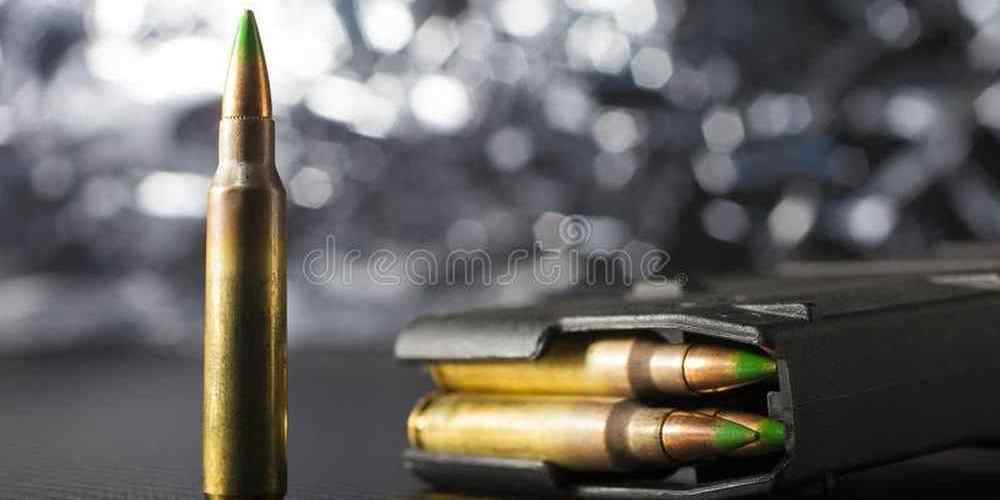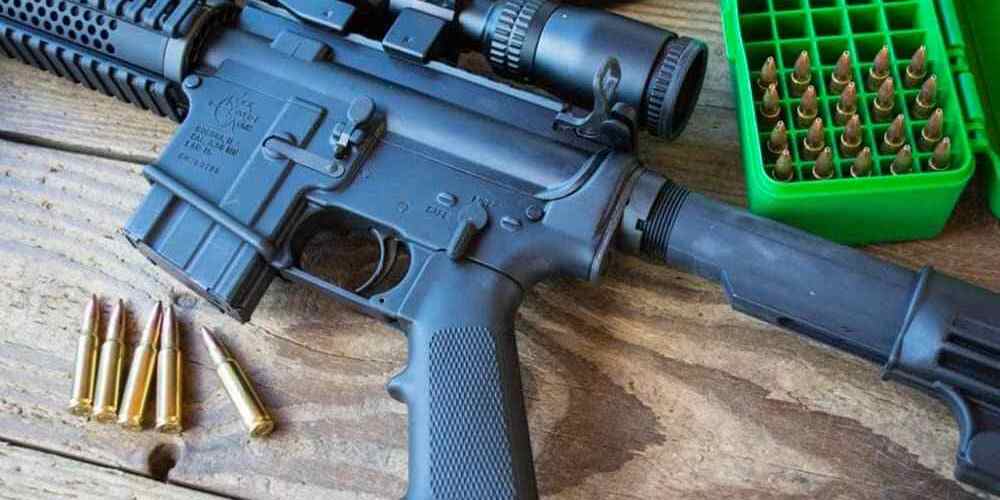“Stay safe, stay informed – the truth about corrosive AR15 ammo”
Effects of Corrosive AR15 Ammo on Firearms
Corrosive ammunition has been a topic of debate among gun owners for many years. Some believe that using corrosive ammo in their firearms can cause irreparable damage, while others argue that the effects are minimal and easily preventable with proper maintenance. In this article, we will explore the potential effects of corrosive AR15 ammo on firearms and whether or not it is a real concern for gun owners.
Corrosive ammunition contains chemicals that can accelerate the rusting process in firearms if not properly cleaned after use. The most common corrosive primers contain potassium chlorate, which leaves behind a residue that can lead to rust and pitting if left untreated. This can be a serious issue for gun owners who do not regularly clean their firearms after shooting corrosive ammo.
One of the main concerns with using corrosive AR15 ammo is the potential for long-term damage to the barrel and other components of the firearm. If the residue from the corrosive primer is not cleaned out of the barrel, it can lead to pitting and erosion over time. This can affect the accuracy and overall performance of the firearm, potentially reducing its lifespan.
However, it is important to note that the effects of corrosive ammo can be easily mitigated with proper cleaning and maintenance. After shooting corrosive ammunition, gun owners should thoroughly clean their firearms with a solvent that can neutralize the corrosive residue. This will help prevent any long-term damage and ensure that the firearm continues to function properly.
Another potential concern with using corrosive AR15 ammo is the impact it can have on the reliability of the firearm. If the residue from the corrosive primer builds up in the action or other moving parts of the gun, it can cause malfunctions and failures. This can be a serious safety issue for gun owners who rely on their firearms for self-defense or hunting.
To prevent these issues, gun owners should make sure to clean their firearms thoroughly after shooting corrosive ammo. This includes disassembling the firearm and cleaning all components with a solvent that can neutralize the corrosive residue. Regular maintenance and inspection of the firearm can also help prevent any potential issues from arising.
In conclusion, while corrosive AR15 ammo can pose a potential risk to firearms if not properly cleaned and maintained, it is not necessarily a cause for alarm. With the right precautions and regular maintenance, gun owners can continue to use corrosive ammunition without fear of damaging their firearms. By staying vigilant and taking the necessary steps to clean their firearms after shooting corrosive ammo, gun owners can enjoy the benefits of using this type of ammunition without worrying about long-term damage.
How to Properly Clean and Maintain Firearms After Using Corrosive Ammo
Corrosive ammunition has been a topic of debate among gun owners for quite some time. Some believe that using corrosive ammo in their firearms can lead to serious damage, while others argue that as long as the gun is properly cleaned and maintained, there should be no issues. In this article, we will explore whether corrosive AR15 ammo is a real concern and provide some tips on how to properly clean and maintain your firearm after using corrosive ammunition.

First and foremost, it is important to understand what corrosive ammunition is. Corrosive ammo contains chemicals such as potassium chlorate or sodium chloride, which leave behind residue that can be corrosive to the metal components of a firearm if not properly cleaned. This residue can lead to rust and pitting, which can ultimately affect the performance and longevity of the gun.
So, is corrosive AR15 ammo a real concern? The short answer is yes, it can be if not properly addressed. However, with the right cleaning and maintenance routine, the potential damage from corrosive ammo can be mitigated. The key is to clean your firearm thoroughly and promptly after each use of corrosive ammunition.
When it comes to cleaning a firearm that has been used with corrosive ammo, there are a few important steps to follow. First, make sure to disassemble the gun completely to access all the metal components that may have come into contact with the corrosive residue. Use a solvent specifically designed for removing corrosive residue, such as a mixture of water and ammonia or a commercial gun cleaner.
Next, use a cleaning brush or patch to scrub away any residue from the metal surfaces of the gun. Pay close attention to areas where the residue may have accumulated, such as the chamber, bore, and bolt carrier group. Once the residue has been removed, thoroughly dry the gun to prevent any moisture from causing further corrosion.
After cleaning the gun, it is important to lubricate the metal components to protect them from future corrosion. Use a high-quality gun oil or grease to coat the surfaces of the gun, paying special attention to areas that are prone to wear and friction. This will help prevent rust and pitting from developing on the metal surfaces of the firearm.
In addition to cleaning and lubricating your firearm after using corrosive ammo, it is also important to store it properly to prevent further damage. Keep your gun in a cool, dry place away from moisture and humidity, as these conditions can accelerate corrosion. Consider using a gun safe or storage case to protect your firearm from environmental factors that can contribute to rust and pitting.
In conclusion, while corrosive AR15 ammo can pose a real concern for gun owners, it can be effectively managed with proper cleaning and maintenance practices. By following a thorough cleaning routine and storing your firearm in a safe environment, you can prevent corrosion and ensure the longevity of your gun. Remember, a well-maintained firearm is a reliable and safe firearm.
Comparing Corrosive and Non-Corrosive AR15 Ammo
When it comes to ammunition for your AR15, there are a lot of factors to consider. One of the most important considerations is whether the ammo you are using is corrosive or non-corrosive. Corrosive ammo has been a concern for many gun owners, as it can cause damage to your firearm if not properly cleaned after use. But is corrosive AR15 ammo really a significant concern? Let’s take a closer look at the differences between corrosive and non-corrosive ammo to help you make an informed decision.
Corrosive ammo contains chemicals that can cause rust and corrosion to build up in your firearm if not cleaned properly. These chemicals are typically found in the primers of the cartridges and can be activated when the gun is fired. This can lead to pitting and erosion of the metal components of your gun, which can affect its performance and longevity.
Non-corrosive ammo, on the other hand, does not contain these harmful chemicals and is designed to be less damaging to your firearm. While non-corrosive ammo may be more expensive than corrosive ammo, many gun owners believe that the extra cost is worth it to protect their investment in their firearms.
One of the main reasons why some gun owners choose to use corrosive ammo is because it is often cheaper than non-corrosive ammo. However, the cost savings of using corrosive ammo may not be worth the potential damage it can cause to your firearm in the long run. It is important to weigh the cost savings against the potential cost of repairing or replacing your gun due to corrosion.
Another factor to consider when choosing between corrosive and non-corrosive ammo is the ease of cleaning. Corrosive ammo requires more thorough cleaning after each use to remove the harmful chemicals that can cause damage to your firearm. This can be time-consuming and tedious, especially if you are using your gun frequently. Non-corrosive ammo, on the other hand, is easier to clean and requires less maintenance to keep your firearm in good working condition.
In addition to the potential damage to your firearm, corrosive ammo can also be harmful to your health if not handled properly. The chemicals in corrosive primers can be toxic if ingested or inhaled, so it is important to take precautions when using this type of ammo. Non-corrosive ammo is generally considered to be safer to use and handle, making it a better choice for those who prioritize safety.
Overall, while corrosive AR15 ammo may be cheaper than non-corrosive ammo, the potential damage it can cause to your firearm and the extra maintenance required may not be worth the cost savings. Non-corrosive ammo is a safer and more reliable option for gun owners who want to protect their firearms and ensure they are in good working condition for years to come.
In conclusion, while corrosive AR15 ammo may be a real concern for some gun owners, the benefits of using non-corrosive ammo outweigh the potential risks. By choosing non-corrosive ammo, you can protect your firearm from damage, reduce the amount of maintenance required, and ensure the safety of yourself and others when handling your gun. Make the smart choice and invest in non-corrosive AR15 ammo for a better shooting experience.
Tips for Storing Corrosive Ammo Safely
Corrosive ammunition has been a topic of concern for gun owners for many years. The use of corrosive ammo, such as surplus military ammunition, can lead to rust and corrosion in firearms if not properly cleaned and maintained. One type of firearm that is particularly susceptible to corrosion from corrosive ammo is the AR15.
The AR15 is a popular rifle among gun enthusiasts for its versatility and customization options. However, the use of corrosive ammunition in an AR15 can lead to serious damage if not addressed promptly. Corrosive ammo contains salts that can attract moisture and cause rust to form on the metal components of the firearm. This can lead to decreased accuracy, reliability, and even safety issues if not properly addressed.
One of the main concerns with corrosive AR15 ammo is the potential for damage to the barrel. The salts in corrosive ammo can cause pitting and erosion in the barrel, which can affect the accuracy and performance of the rifle. In extreme cases, the barrel may need to be replaced, which can be costly and time-consuming.
To prevent damage from corrosive ammo, it is important to clean your AR15 thoroughly after each use. This includes removing all traces of corrosive salts from the barrel, bolt carrier group, and other metal components. A thorough cleaning with a solvent specifically designed to neutralize corrosive salts is essential to prevent rust and corrosion from forming.
In addition to cleaning your AR15 after each use, it is also important to store your corrosive ammo properly. Corrosive ammo should be stored in a cool, dry place away from moisture and humidity. Storing corrosive ammo in a sealed container with a desiccant pack can help prevent moisture from reaching the ammunition and causing it to corrode.
Another important tip for storing corrosive ammo safely is to label your ammunition properly. Corrosive ammo should be clearly marked as such to prevent accidental use in firearms that are not designed to handle corrosive ammunition. This can help prevent damage to your firearms and ensure that you are using the appropriate cleaning procedures after shooting corrosive ammo.
Overall, while corrosive AR15 ammo can be a concern for gun owners, it can be managed with proper cleaning and storage techniques. By taking the time to clean your AR15 thoroughly after each use and store your corrosive ammo properly, you can prevent damage to your firearms and ensure that they continue to perform reliably and safely. Remember to always follow manufacturer recommendations for cleaning and maintenance to keep your AR15 in top condition for years to come.
Addressing Common Myths and Misconceptions About Corrosive AR15 Ammo
When it comes to ammunition for firearms, there are many myths and misconceptions that can cause confusion and concern among gun owners. One common misconception is that corrosive AR15 ammo is a serious threat to the longevity and performance of your firearm. In this article, we will address this myth and provide you with the facts you need to make an informed decision about the use of corrosive ammo in your AR15.
First and foremost, it is important to understand what corrosive ammo actually is. Corrosive ammo refers to ammunition that contains primers with corrosive compounds such as potassium chlorate or potassium perchlorate. When these compounds are ignited, they leave behind residue that can be corrosive to the metal components of a firearm if not properly cleaned and maintained.
Many gun owners believe that using corrosive ammo in their AR15 will cause irreparable damage to the barrel and other parts of the gun. However, this is not necessarily the case. While it is true that corrosive residue can cause rust and corrosion if left unchecked, the key to preventing damage is proper cleaning and maintenance.
After shooting corrosive ammo, it is important to thoroughly clean your AR15 to remove any residue left behind. This can be done by using a cleaning solvent specifically designed to dissolve corrosive salts, followed by a thorough cleaning with a bore brush and patches. By taking the time to properly clean your firearm after shooting corrosive ammo, you can prevent rust and corrosion from forming and ensure that your AR15 remains in top condition.
Another common concern about corrosive AR15 ammo is its impact on accuracy and performance. Some gun owners believe that using corrosive ammo will cause their AR15 to malfunction or perform poorly. However, this is not necessarily the case. As long as the firearm is properly cleaned and maintained, there should be no significant impact on accuracy or performance when using corrosive ammo.
It is also worth noting that corrosive ammo is often less expensive than non-corrosive alternatives, making it an attractive option for budget-conscious gun owners. While it may require a bit more effort in terms of cleaning and maintenance, the cost savings can be significant for those who shoot frequently.
In conclusion, corrosive AR15 ammo is not the serious threat that many gun owners believe it to be. By taking the time to properly clean and maintain your firearm after shooting corrosive ammo, you can prevent rust and corrosion and ensure that your AR15 remains in top condition. Additionally, there should be no significant impact on accuracy or performance when using corrosive ammo, as long as proper cleaning procedures are followed.
So, the next time you come across corrosive AR15 ammo, don’t let myths and misconceptions cloud your judgment. With the right knowledge and care, you can safely and effectively use corrosive ammo in your AR15 without any real concerns.




